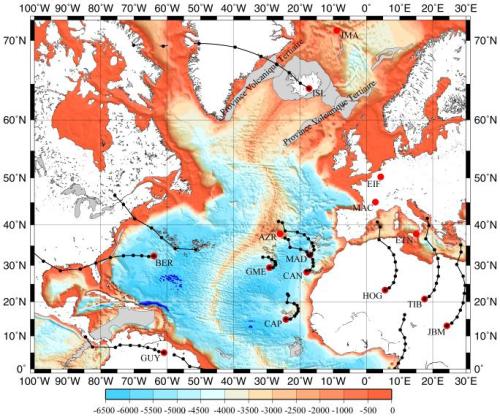| Under the supervision of: | A. Bonneville Laboratoire de Géosciences Marines, IPGP |
| V. Courtillot Laboratoire de Paléomagnétisme et Géodynamique, IPGP |

The hypothesis of the existence of hotspots appears during the 1970's for the first time. They have been defined like phenomena, witch may be correlated with mantle convection, fixed compared with plates tectonics motion and with a visible track on crust's surface. Hotspots tracks and their relationship with trapps and flood basalts have been already studied in the Pacific Ocean. We take an interest in Atlantic and Indian Oceans. Bathymetric maps underlined the presence of tracks with hotspots at the end. Some hotspots can be related with trapps. Hotspots without tracks have been underline too. With the aid of seamounts and volcanic islands age compilation, tracks could be time constraint. Then we could compare the evolution of bathymetric tracks with calculated tracks from PaleoMac software. We study more particulary four hotspots. St Helena and Tristan da Cunha in Atlantic Ocean and La Réunion and Kerguelen in Indian Ocean. Differences between the tracks are low, except for the Kerguelen. It seemes that hotspots have only small motion. These motions are all in the mantle plume influence area.
Bathymetric map and PaleoMac calculed tracks of North Atlantic Ocean hotspots (deep in meter).>>>